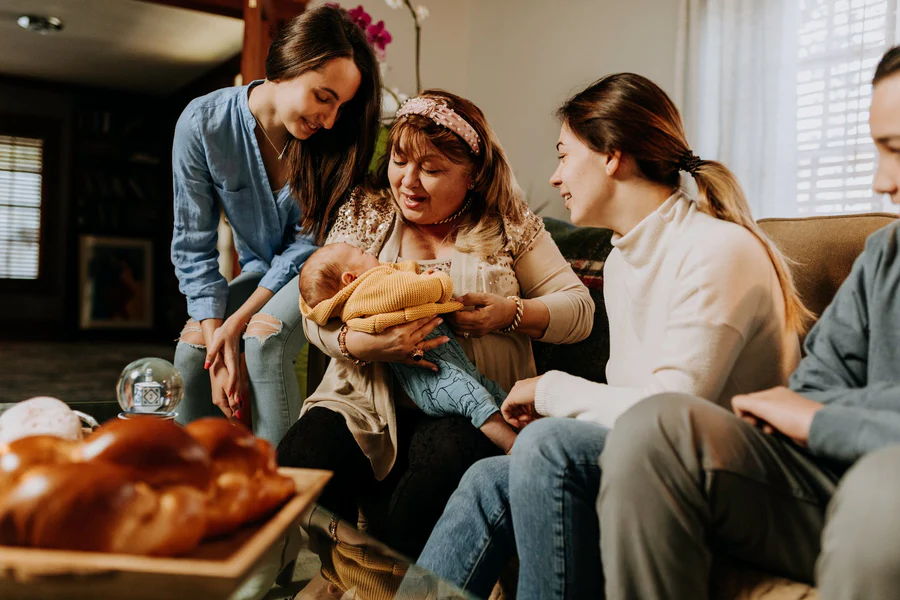Table of Contents
- Decoding Reactive Attachment Disorder: More Than Just Difficult Behavior
- Recognizing the Signs: What Does RAD Look Like?
- The Ripple Effect: How RAD Impacts Children and Families
- Building Bridges: Core Principles for Supporting Children with RAD
- Actionable Insights: Practical Strategies for Everyday Life
- 1. Create a Sanctuary: Safety, Stability, Structure
- 2. Be the Rock: Consistency and Predictability
- 3. Connect Through Attunement: Meeting Needs Proactively
- 4. Nurturing Touch (With Respect): Building Positive Associations
- 5. Setting Boundaries with Empathy: Structure and Security
- 6. Managing Difficult Behaviors: Staying Calm Under Pressure
- 7. Teaching Skills: Emotional Regulation and Social Interaction
- 8. Celebrate Every Victory: Acknowledge Progress
- Seeking Professional Help: You Don’t Have to Do It Alone
- Caring for the Caregiver: Replenishing Your Well
- Extending Support: School and Community Collaboration
- A Journey of Hope: Healing is Possible
Navigating the Path Together: A Compassionate Guide to Supporting Children with Reactive Attachment Disorder
Imagine a child who seems locked away emotionally, unable to connect, seek comfort, or offer affection, even to those trying desperately to provide a loving home. This isn’t defiance for defiance’s sake; for some children, it’s a profound struggle rooted in early experiences – a condition known as Reactive Attachment Disorder (RAD). Parenting or caring for a child with RAD can feel isolating, confusing, and deeply challenging. But here’s the most important thing to remember: you are not alone, and there is hope.
Understanding and supporting a child with RAD requires immense patience, specialized knowledge, and unwavering commitment. It’s a journey that tests limits but also holds the potential for incredible healing and connection. This article aims to be your compassionate guide, offering insights, practical strategies, and resources to help you navigate this complex path. We’ll delve into what RAD truly means, how it manifests, and most importantly, how you can provide the consistent, nurturing support these children desperately need to build trust and begin to heal.
Decoding Reactive Attachment Disorder: More Than Just Difficult Behavior
Reactive Attachment Disorder (RAD) is a serious but relatively rare condition that can affect children who have experienced significant social neglect or deprivation during their crucial early developmental years (typically before age 5). This lack of consistent, responsive caregiving disrupts the normal process of forming secure attachments – the emotional bonds that help children feel safe, secure, and understood.
According to the Diagnostic and Statistical Manual of Mental Disorders (DSM-5), RAD falls under the category of Trauma- and Stressor-Related Disorders. It’s essential to understand that RAD is not caused by a single traumatic event but rather by a *pattern* of insufficient care. This can include:
- Persistent disregard for the child’s basic emotional needs for comfort, stimulation, and affection.
- Persistent disregard for the child’s basic physical needs.
- Repeated changes of primary caregivers that limit opportunities to form stable attachments (e.g., frequent changes in foster care).
- Rearing in unusual settings that severely limit opportunities to form selective attachments (e.g., institutions with high child-to-caregiver ratios).
The core feature of RAD is severely disturbed and developmentally inappropriate attachment behaviors. Children with RAD rarely seek comfort when distressed and minimally respond to comfort when offered. They essentially learn that caregivers cannot be relied upon for safety or emotional regulation.
RAD vs. Other Conditions: Understanding the Nuances
It’s crucial to differentiate RAD from other conditions that might present with challenging behaviors. While symptoms can overlap, the underlying cause and core features differ:
- Disinhibited Social Engagement Disorder (DSED): Also linked to early neglect, DSED involves children being *overly* familiar and comfortable with strangers, lacking appropriate social boundaries. Unlike RAD, where children are withdrawn, children with DSED might wander off with unfamiliar adults without hesitation.
- Autism Spectrum Disorder (ASD): While some social difficulties might appear similar, ASD is a neurodevelopmental disorder present from birth, affecting social communication, interaction, and featuring restricted, repetitive behaviors. Attachment issues in ASD stem from different neurological wiring, not primarily from neglect (though neglect can co-occur).
- Attention-Deficit/Hyperactivity Disorder (ADHD): Characterized by inattention, hyperactivity, and impulsivity. While children with RAD might be impulsive or struggle with focus due to underlying anxiety or trauma, the core issue in RAD is the disturbed attachment pattern.
- Oppositional Defiant Disorder (ODD) / Conduct Disorder (CD): These involve patterns of defiant, hostile, or antisocial behavior. While children with RAD can exhibit oppositional behaviors as a way to maintain control or express distress, the root cause in RAD is the attachment disruption and trauma history.
A thorough assessment by a qualified mental health professional experienced in attachment and trauma is vital for an accurate diagnosis.
Recognizing the Signs: What Does RAD Look Like?
Children with RAD internalize their distress, often presenting as emotionally withdrawn and inhibited. Recognizing the signs is the first step toward getting appropriate help. Keep in mind that these behaviors must be persistent and occur across different relationships, not just isolated incidents.
Key characteristics of Reactive Attachment Disorder (inhibited type) include:
- Minimal Seeking of Comfort: The child rarely or minimally seeks comfort, support, protection, or nurturance from caregivers, even when distressed, hurt, ill, or frightened.
- Minimal Response to Comfort: When distressed, the child rarely or minimally responds to comforting efforts from caregivers. They might push away, ignore, or show no change in emotion when someone tries to soothe them.
- Limited Positive Affect: The child shows reduced expression of positive emotions during routine interactions with caregivers. Smiles, laughter, and expressions of joy may be infrequent or absent.
- Episodes of Unexplained Irritability, Sadness, or Fearfulness: The child may display unexplained negative emotions (fear, sadness, irritability) that are evident even during non-threatening interactions with adult caregivers.
- Social and Emotional Disturbances: Limited social responsiveness to others, appearing detached or uninterested in social engagement.
- Resistance to Affection: May actively resist physical affection or show discomfort with gentle touch.
- Control Issues: May exhibit a strong need to control situations and interactions, often through defiance or manipulation, as a way to feel safe in an unpredictable world.
- Lack of Eye Contact: May avoid making eye contact, especially during emotional moments or when being comforted.
It’s important to remember that these behaviors are survival mechanisms developed in response to early adverse experiences. They are not intentional acts designed to hurt or frustrate caregivers, even though it can often feel that way.

The Ripple Effect: How RAD Impacts Children and Families
The impact of RAD extends far beyond the child’s individual behavior. It creates ripples that affect their development, family dynamics, and overall well-being.
Impact on the Child:
- Emotional Development: Difficulty understanding, expressing, and regulating emotions. Low self-esteem and a negative self-view are common.
- Social Development: Struggles forming and maintaining healthy peer relationships. May misinterpret social cues or engage in inappropriate social behaviors.
- Cognitive Development: Chronic stress and trauma can impact brain development, potentially affecting learning, attention, and executive functions.
- Mental Health: Increased risk for developing other mental health conditions later in life, such as depression, anxiety disorders, and personality disorders, if left untreated.
Impact on the Family:
- Caregiver Stress and Burnout: Parenting a child with RAD is emotionally and physically exhausting. Caregivers often experience high levels of stress, frustration, guilt, and feelings of inadequacy.
- Marital/Partner Strain: Disagreements on parenting approaches, lack of time for the couple, and the sheer stress of the situation can put significant strain on relationships.
- Impact on Siblings: Siblings may feel neglected, confused, or resentful due to the intense focus required by the child with RAD. They may also be targets of aggression or manipulation.
- Social Isolation: Families may withdraw socially due to challenging behaviors or fear of judgment from others who don’t understand RAD.
Acknowledging these challenges is not about assigning blame but about understanding the profound impact of RAD and the critical need for comprehensive support for the entire family system.
Building Bridges: Core Principles for Supporting Children with RAD
Supporting a child with RAD is fundamentally about rebuilding what was broken: the sense of safety and trust in caregivers. This requires a therapeutic approach grounded in specific core principles:
- Safety First and Foremost: Creating an environment where the child feels physically and emotionally safe is paramount. This means protecting them from further harm, managing overwhelming stimuli, and ensuring caregivers are regulated themselves.
- Unwavering Consistency: Children with RAD thrive on predictability. Consistent routines, responses, and boundaries help them learn that their world is stable and that caregivers are reliable.
- Predictability in Interactions: Responding to the child’s needs and behaviors in a predictable, calm manner helps reduce their anxiety and allows them to anticipate caregiver actions.
- Boundless Patience: Healing from attachment trauma takes time – often years. Progress can be slow, with setbacks along the way. Patience is not just a virtue; it’s a necessity.
- Nurturing Presence: Providing warm, responsive, and attuned care, even when it’s not reciprocated, is crucial. This involves being emotionally available and meeting needs proactively.
- Focusing on Building Trust: Every interaction is an opportunity to build trust. This means being dependable, following through on promises, and responding sensitively to their cues (even subtle ones).
These principles form the foundation upon which specific strategies can be built.

Actionable Insights: Practical Strategies for Everyday Life
Knowing the principles is one thing; applying them daily is another. Here are practical strategies caregivers can implement to support a child with Reactive Attachment Disorder:
1. Create a Sanctuary: Safety, Stability, Structure
- Establish Predictable Routines: Implement consistent schedules for meals, bedtime, schoolwork, and playtime. Visual schedules can be helpful.
- Minimize Transitions and Surprises: Prepare the child well in advance for any changes in routine.
- Ensure Physical Safety: Child-proof the environment as needed, considering potential safety risks associated with impulsivity or lack of awareness.
- Create a Calm Space: Designate a quiet, calming area where the child (and caregiver) can go to regulate when feeling overwhelmed.
2. Be the Rock: Consistency and Predictability
- Respond Predictably: Aim for calm, consistent responses to behaviors, both positive and negative. Avoid overly emotional reactions.
- Follow Through: If you set a boundary or promise a reward/consequence, follow through consistently. This builds dependability.
- Maintain Routines Religiously: Especially during times of stress, stick to routines as much as humanly possible.
3. Connect Through Attunement: Meeting Needs Proactively
- Learn Their Cues: Pay close attention to subtle signs of distress, hunger, tiredness, or overwhelm, as children with RAD may not express needs directly.
- Meet Needs Before Asked: Offer snacks before they seem hungry, suggest quiet time before they get overwhelmed. This demonstrates you understand and anticipate their needs.
- Narrate Their Experience: Gently reflect what you think they might be feeling: “It seems like that loud noise scared you,” or “You look frustrated right now.” This helps them build emotional literacy.
- Be Emotionally Available: Put away distractions and be fully present during interactions, even brief ones.
4. Nurturing Touch (With Respect): Building Positive Associations
- Respect Boundaries: Never force affection. Pay attention to the child’s body language and tolerance for touch.
- Offer Gentle, Non-Demanding Touch: Start with brief, safe touch like a hand on the shoulder, a gentle back rub (if tolerated), or sitting side-by-side.
- Incorporate Touch into Routines: Apply lotion after bath time, fix their hair gently, offer a high-five.
- Ask Permission: “Would you like a hug?” or “Is it okay if I sit next to you?”
5. Setting Boundaries with Empathy: Structure and Security
- Keep Rules Simple and Clear: Focus on a few key rules related to safety and respect.
- Use Natural and Logical Consequences: Connect consequences directly to the behavior whenever possible.
- Deliver Consequences Calmly: Avoid anger or lecturing. State the consequence simply and follow through.
- Frame Boundaries Positively: Instead of “Don’t hit,” try “We use gentle hands.”
- Emphasize Safety: Explain that rules are in place to keep everyone safe.
6. Managing Difficult Behaviors: Staying Calm Under Pressure
- Identify Triggers: Observe what situations or events tend to precede challenging behaviors.
- Co-Regulation: Stay calm yourself. Your calm presence can help de-escalate the child. Take deep breaths.
- Use Time-Ins, Not Time-Outs: Instead of isolating the child, stay with them during difficult moments, offering quiet support until they calm down (a “time-in”). Isolation can reinforce feelings of abandonment.
- Focus on the Need Behind the Behavior: Is the child seeking control? Are they overwhelmed? Scared? Address the underlying need once things are calm.
- Have a Safety Plan: For aggressive behaviors, have a plan to ensure everyone’s safety, developed with professional guidance.
7. Teaching Skills: Emotional Regulation and Social Interaction
- Label Emotions: Help the child identify and name their feelings and the feelings of others. Use feeling charts or stories.
- Model Healthy Coping: Talk about your own feelings and how you manage them appropriately (e.g., “I’m feeling frustrated, so I’m going to take some deep breaths”).
- Practice Social Skills: Role-play simple social interactions like sharing, taking turns, or asking for help.
- Provide Positive Reinforcement: Praise effort and small steps in managing emotions or interacting appropriately.
8. Celebrate Every Victory: Acknowledge Progress
- Notice the Small Things: Acknowledge moments of connection, cooperation, or self-regulation, no matter how small they seem.
- Focus on Effort, Not Perfection: Praise the child’s attempts to manage their feelings or follow rules.
- Keep a Journal: Document progress (and challenges) to maintain perspective and see how far you’ve come.
Seeking Professional Help: You Don’t Have to Do It Alone
While caregiver strategies are vital, professional help is almost always necessary for children with RAD and their families. Healing from attachment trauma requires specialized therapeutic interventions.
Finding the Right Support:
- Comprehensive Assessment: Seek a diagnosis from a child psychiatrist, psychologist, or clinical social worker experienced in childhood trauma and attachment disorders.
- Attachment-Based Family Therapy: Therapies like Dyadic Developmental Psychotherapy (DDP), Attachment, Regulation and Competency (ARC), or Parent-Child Interaction Therapy (PCIT) adapted for trauma focus on strengthening the caregiver-child relationship, improving attunement, and resolving trauma.
- Trauma-Informed Therapy: Modalities like Trauma-Focused Cognitive Behavioral Therapy (TF-CBT) or Eye Movement Desensitization and Reprocessing (EMDR) – adapted for children – can help process traumatic memories safely.
- Play Therapy/Expressive Arts Therapy: Can help younger children express feelings and experiences non-verbally.
- Parent Training and Support: Therapy should involve significant support and coaching for caregivers, providing tools and strategies tailored to their child’s needs.
Important Note: Be extremely cautious of therapies promising quick fixes or using coercive methods (e.g., “rebirthing therapy,” holding therapy involving forced restraint against the child’s will). These approaches are not evidence-based and can be harmful and re-traumatizing. Seek therapists who prioritize safety, attunement, and building trust collaboratively.

Caring for the Caregiver: Replenishing Your Well
Supporting a child with RAD is a marathon, not a sprint. Caregiver burnout is a significant risk, making self-care not a luxury, but an absolute necessity. You cannot pour from an empty cup.
- Seek Your Own Support: Find a therapist for yourself to process your own feelings, stress, and potential secondary trauma.
- Join Support Groups: Connect with other parents or caregivers navigating similar challenges. Sharing experiences and strategies can be incredibly validating and helpful. Look for groups facilitated by qualified professionals.
- Utilize Respite Care: Arrange for trusted, trained individuals to care for your child periodically so you can have breaks to recharge. This might involve trained respite providers, supportive family members (who understand RAD), or specialized programs.
- Manage Expectations: Understand that healing takes time, and progress isn’t linear. Focus on small steps and celebrate them.
- Educate Your Network: Help close friends and family understand RAD (to the extent possible) so they can offer more effective support and less judgment.
- Practice Self-Compassion: Acknowledge the difficulty of the task. Forgive yourself for mistakes. You are doing your best in an incredibly challenging situation.
- Prioritize Basic Needs: Ensure you’re getting enough sleep, eating nourishing food, and incorporating some form of physical activity or relaxation into your routine, even if it’s just for short periods.
Extending Support: School and Community Collaboration
A child’s healing journey extends beyond the home. Collaboration with schools and the wider community is essential.
- Educate School Staff: Work with teachers, counselors, and administrators to help them understand RAD, the child’s triggers, and effective support strategies. Provide information from therapists (with consent).
- Develop an Individualized Education Program (IEP) or 504 Plan: If needed, advocate for appropriate accommodations and supports in the school setting (e.g., preferential seating, check-ins, modified assignments, access to a safe space, social skills support).
- Consistency Across Environments: Share successful strategies used at home with the school team to promote consistency.
- Advocate for Trauma-Informed Practices: Encourage schools and community organizations to adopt trauma-informed approaches that benefit all children, especially those with histories of adversity.
A Journey of Hope: Healing is Possible
Supporting a child with Reactive Attachment Disorder is undoubtedly one of the most demanding parenting challenges imaginable. It requires a fundamental shift in perspective, understanding that behaviors stem from deep-seated fear and a broken capacity for trust, not malice.
While the path is long and often arduous, healing *is* possible. Through unwavering commitment to providing safety, consistency, predictability, and attuned nurturing, combined with specialized therapeutic support, children with RAD can learn to form meaningful connections. They can learn to trust, to accept comfort, to give and receive love, and to build a more secure future.
Remember to focus on progress, not perfection. Celebrate the glimmers of connection, the moments of vulnerability, the small steps towards trust. Surround yourself with support, prioritize your own well-being, and never underestimate the profound impact your consistent, loving presence can have. You are providing the secure base they never had, offering a chance to rewrite their internal working model of relationships – one patient, predictable, nurturing interaction at a time.











